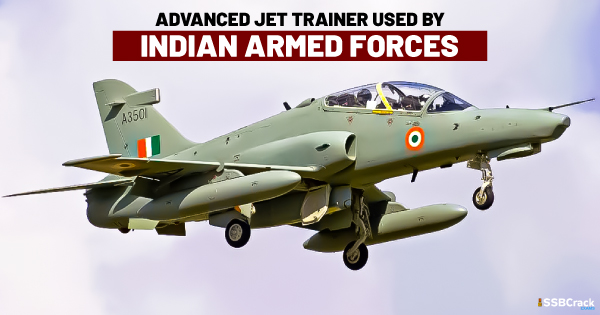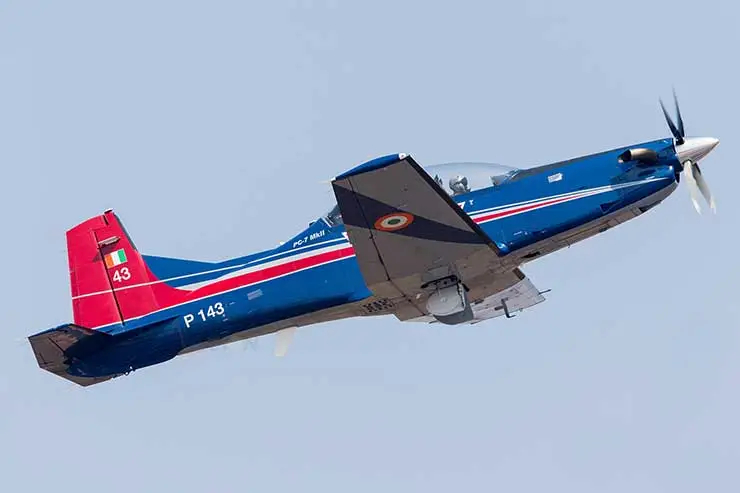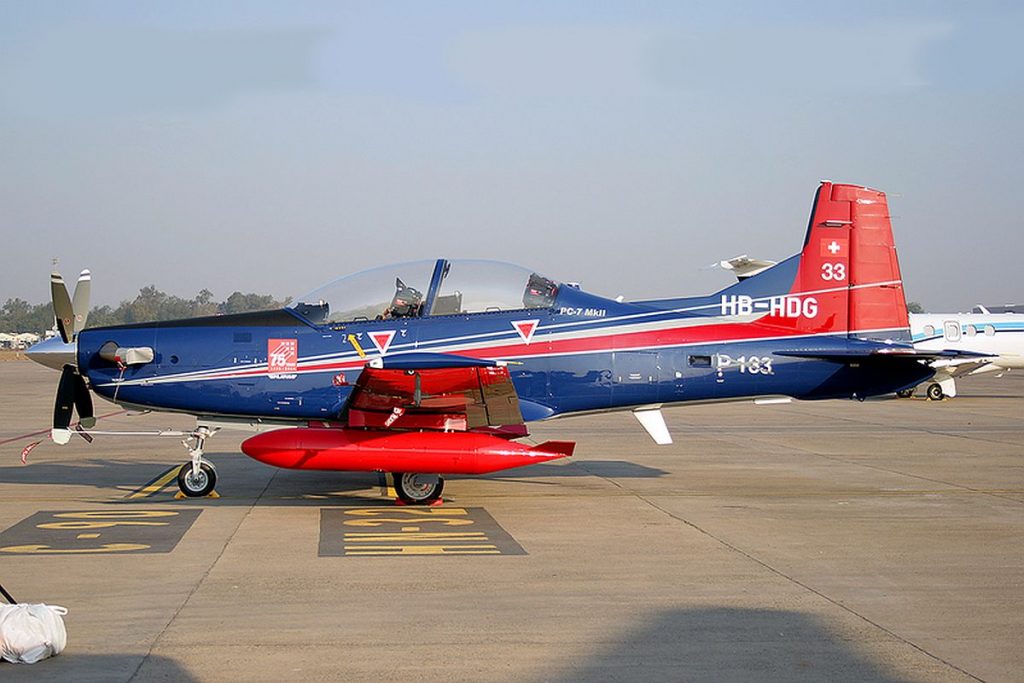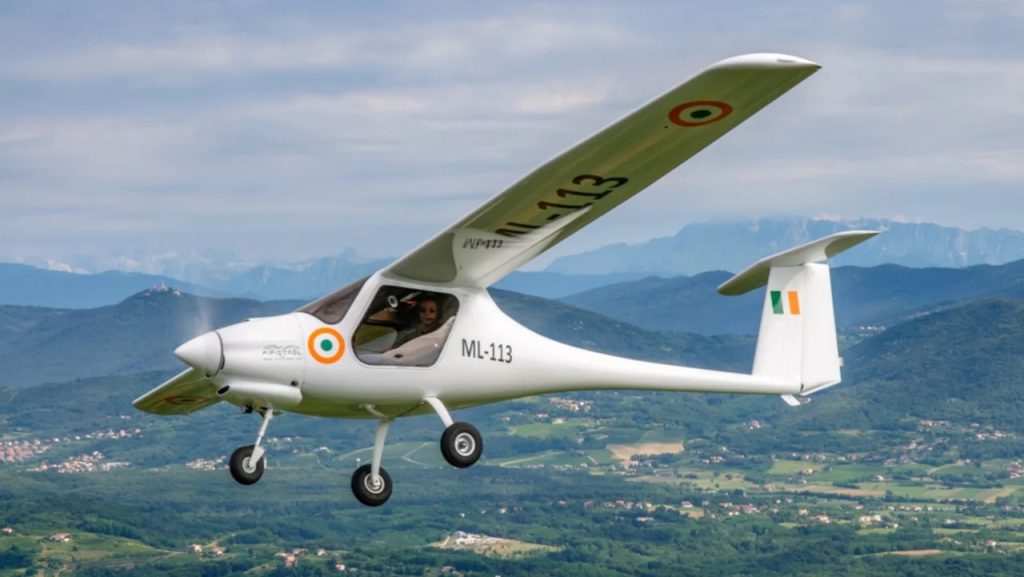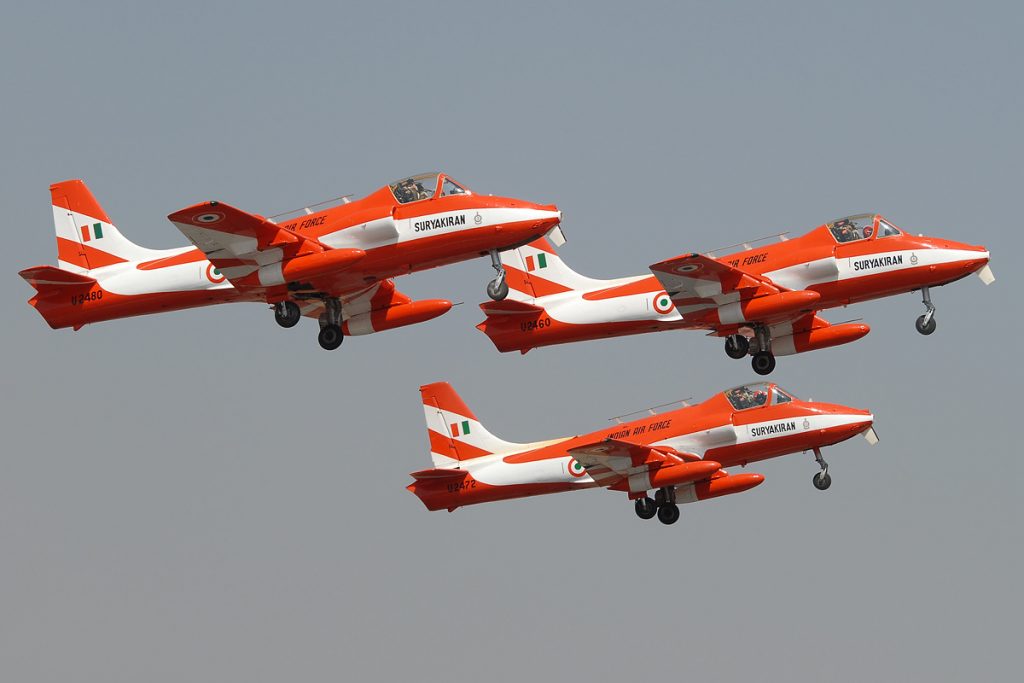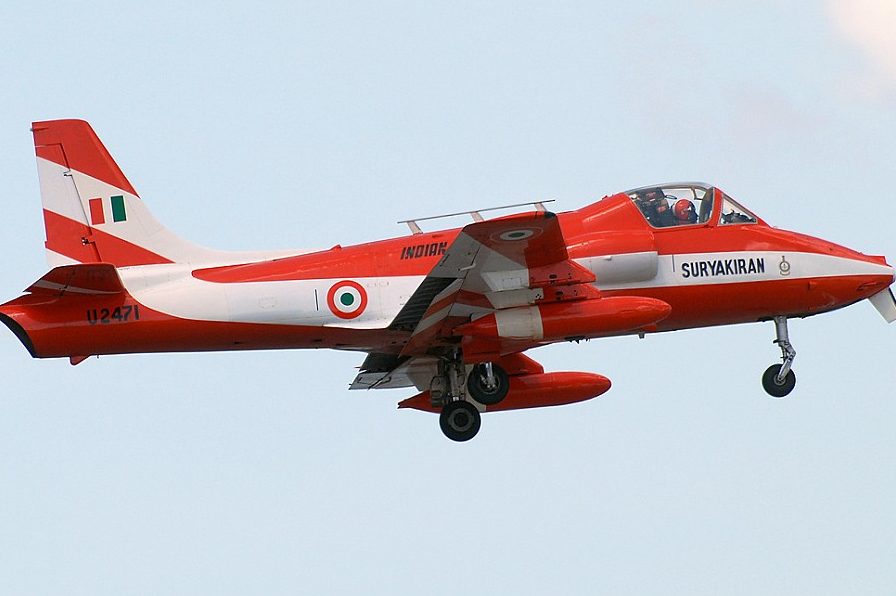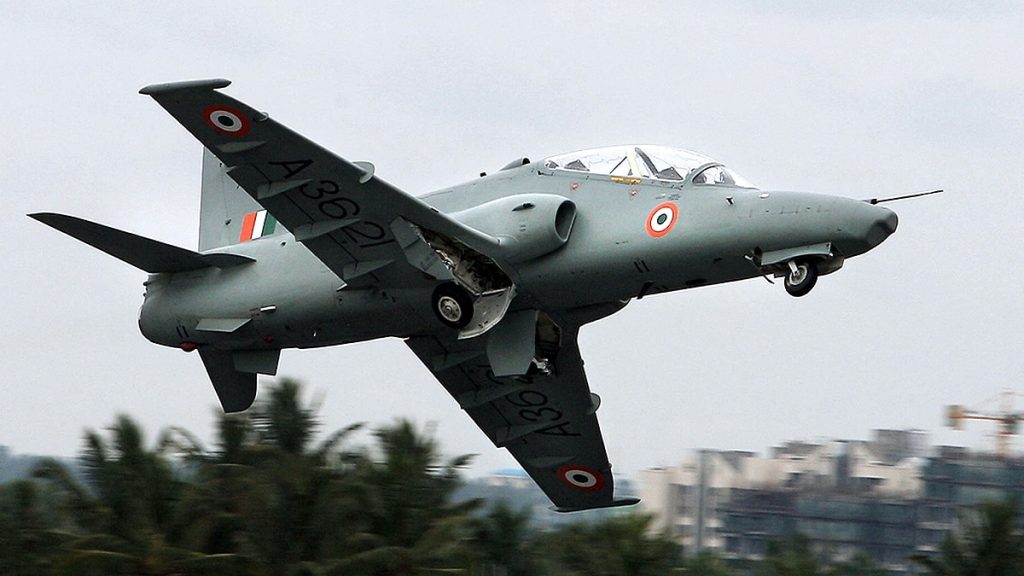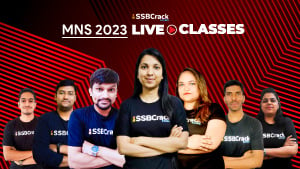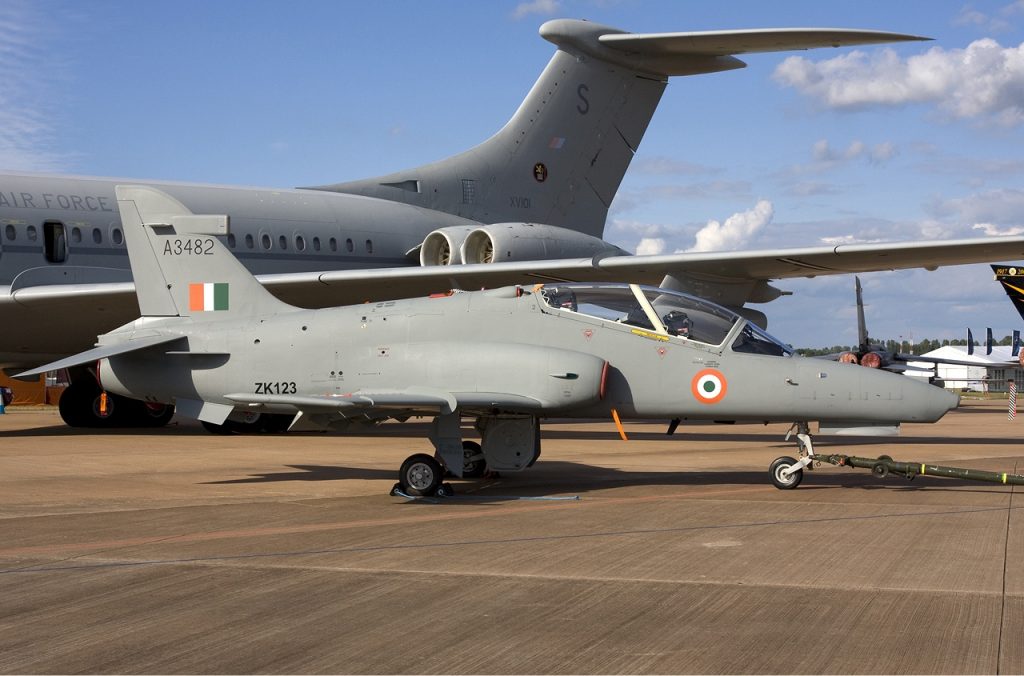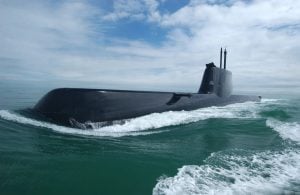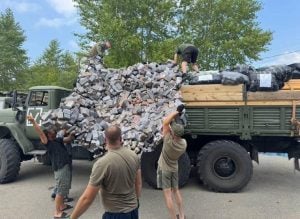Hello Everyone, as we all know Indian Air Force is now the world’s third most powerful Airforce, let us learn today what type of aircraft are used by IAF to train their Pilots. It originated in 1932 as the British Indian Air force and after 1947 ended up as the Indian Air force.
Pilatus PC-7
Switzerland-based Pilatus Aircraft created and produced the low-wing, tandem-seat Pilatus PC-7 Turbo Trainer. Aerobatics, instrument flying, tactical maneuvers, and night flying are all among the basic training functions that the aircraft is capable of.
The previous Pilatus P-3 was developed into the PC-7, with the main differences being the addition of a turboprop engine, a bubble canopy, and a new one-piece wing. Since its introduction in the 1970s, it has grown to occupy a significant portion of the world trainer market. More than 20 air forces, as well as numerous private operators, have accepted the type as their initial trainer. Globally, PC-7s have reportedly flown for more than a million hours. Several clients, including Chad, Iran, and Mexico, have utilised some aircraft for combat missions in addition to training exercises, frequently in breach of the appropriate export agreement between the customer and the Swiss government.
Also read: All Fighter Aircraft Of India – How To Identify Them
Variants of Pilatus
- P7: PT6A-25A engine rated at 410 kW powers this two-seat basic trainer aircraft (550 shp).
- P7 MK II: The PC-9’s airframe and avionics were developed into the PC-7 Mk II, which kept the PC-7’s wing for mounting external storage. powered by the less potent PT6A-62 of PC-9 and the 522 kW (700 shp) PT6A-25C. The “Astra” aircraft, designed for the SAAF, is a hybrid PC-7/PC-9 that can be configured as either a PC-7 “Heavy” or a PC-9 “Lite” depending on the configuration point.
Also read: All Aircrafts Of Indian Air Force [UPDATED LIST]
- NCPC: The Swiss Air Force produced the NCPC-7, an improved variant of the PC-7 with fully IFR glass cockpit avionics. The Swiss Air Force has been using the abbreviation NCPC-7 to distinguish modified PC-7s (NC for New Cockpit) from others that weren’t yet done. It was taken out in 2009 after the final 28 aircraft were upgraded. As a result, the Turbo-Trainer was once more given the designation PC-7.
Pipistrel Virus
The Pipistrel Virus is a two-seat, single-engine light aircraft that Pipistrel produces in Slovenia and Italy for ultralight, DIY, or light-sport use. The Virus, which debuted in 1999 and was based on the Pipistrel Sinus design, has been produced in a variety of variations with various engine, wing, and undercarriage arrangements. A full airframe emergency recovery parachute system is an option for India
In India, the Indian Air Force is having 72 PV. Indian Navy – 12 and the National Cadet Corps is also operating 110 PVs.
HAL KIRAN
Hindustan Aeronautics Limited, an aircraft manufacturer, developed and produced the two-seat intermediate jet-powered trainer aircraft known as the HAL HJT-16 Kiran (or “Ray of light”) (HAL).
The Indian Air Force (IAF), which was looking for a new intermediate trainer aircraft for its pilots, requested the development of the Kiran. The type had its first flight on September 4, 1964, and mass production followed soon after. The IAF has adopted it and utilizes it to teach pilots at the intermediate level after receiving basic training on the HPT-32 Deepak and Pilatus PC-7. In addition, the IAF acquired a handful of Kirans in the 1980s that were outfitted with a more potent engine and more hard points; this type was known as the Kiran Mk II. Additionally, the Indian Naval Air Arm has adopted it.
Also read: Top 5 Fastest Fighter Jets In The World
Kiran in India
Over 50 years have passed since the Kiran entered active service. A locally created replacement, the HAL HJT-36 Sitara, has been in development since the late 1990s, but as of 2019, it has not yet entered service. As more recent BAE Systems Hawks, made under licence by HAL, entered IAF service in the 2010s, use of the type began to steadily decline. Up until February 2011, the IAF’s aerobatic team Surya Kiran utilised the Kiran, as did the Indian Navy’s Sagar Pawan team. However, after the team’s aircraft were diverted to train fighter pilots, the team was disbanded. Hawks with specialised equipment have been re-equipped for the Surya Kiran display team.
Sagar Pawan and Surya Kiran, two separate aerobatic display teams operated by the Indian Naval Air Arm and the Indian Air Force, respectively. During the Indian Aviation 2010 air show in Hyderabad on March 3, 2010, a Kiran Mk II of the Sagar Pawan aerobatic team crashed into a building, killing both crew members and wounding four spectators on the ground. The remaining Kirans allocated to the Surya Kiran demonstration team were replaced by 20 Hawk Mk132 aircraft that the Indian Defense Ministry ordered from HAL in the 2010s. By 2019, the Surya Kiran display team had received several Hawks and was doing its renowned aerial demonstrations.
Six Kirans were given by India to the neighboring country of Myanmar in December 2018, and a team of experts was sent with them to teach the ground crew and pilots on how to fly them. Publication According to Times Now, this gift was a purposefully politically charged choice made to deepen military connections between the two nations and to provide a method of offsetting the region’s growing influence on China.
BAE HAWK
An advanced trainer aircraft with a single jet engine is called the BAE Systems Hawk. As the Hawker Siddeley Hawk, it made its first flight in Dunsfold, Surrey, in 1974. British Aerospace and BAE Systems, the company that succeeded Hawker Siddeley, went on to produce the aircraft. It has been used as a training tool and a cheap combat aircraft.
ALso read: Indian Air Force Ranks 3rd On World Air Power Index
With over 900 Hawks sold to 18 operators worldwide, the Hawk is still being produced in the UK and in India by Hindustan Aeronautics Limited (HAL) under license.
Specifications
Hawk is a cutting-edge, two-seat trainer with a tandem cockpit, low-mounted cantilever wing, and one turbofan engine. The Hawk was created with training in mind, in contrast to many of the earlier trainers in RAF service. The aircraft was designed by Hawker to be highly serviceable and to have lower acquisition and operating costs than earlier trainers like the Jet Provost. Pilots have commended the Hawk for its agility, particularly for how well it handles rolls and turns.
Hawk in India
The Hawk Mk. 132 officially started serving with the Indian Air Force (IAF) on February 23, 2008, following one of the longest procurement processes in Indian history, which lasted for two decades between the initial expression of interest and the contract’s signing on March 26, 2004. Beginning in November 2007, BAE Systems delivered 24 aircraft directly to the IAF, and between 2008 and 2011, Hindustan Aeronautics Limited manufactured another 42 Hawks. India intended to purchase 57 additional Hawks in February 2008, with 40 going to the Indian Air Force and the remaining 17 to the Indian Navy.
The IAF’s Bidar Air Force Station in north Karnataka, which is around 700 kilometers from Bangalore, is home to the Hawk fleet. The Indian Air Force and Indian Navy each have 17 aircraft on order as of the year 2015. The negotiations are underway for the second order of 20 aircraft.
Also read: List Of Aircraft Used By Indian Navy
If you are preparing for defence exams and SSB Interview, SSBCrackExams is providing a number of courses and study material. Join today and boost up your preparation.
To crack the SSB Interview, You can join our SSB interview live classes batch and we recommend you to Enroll SSB INTERVIEW ONLINE COURSE. Trusted by thousands of defence aspirants.
